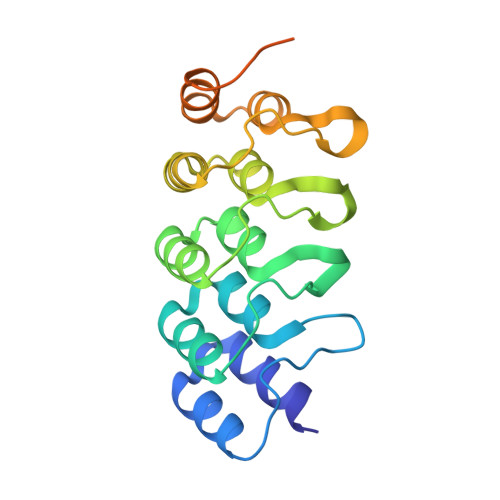Receptor subtype discrimination using extensive shape complementary designed interfaces.
Dang, L.T., Miao, Y., Ha, A., Yuki, K., Park, K., Janda, C.Y., Jude, K.M., Mohan, K., Ha, N., Vallon, M., Yuan, J., Vilches-Moure, J.G., Kuo, C.J., Garcia, K.C., Baker, D.(2019) Nat Struct Mol Biol 26: 407-414
- PubMed: 31086346
- DOI: https://doi.org/10.1038/s41594-019-0224-z
- Primary Citation of Related Structures:
6NDZ, 6NE1, 6NE2, 6NE4 - PubMed Abstract:
To discriminate between closely related members of a protein family that differ at a limited number of spatially distant positions is a challenge for drug discovery. We describe a combined computational design and experimental selection approach for generating binders targeting functional sites with large, shape complementary interfaces to read out subtle sequence differences for subtype-specific antagonism. Repeat proteins are computationally docked against a functionally relevant region of the target protein surface that varies in the different subtypes, and the interface sequences are optimized for affinity and specificity first computationally and then experimentally. We used this approach to generate a series of human Frizzled (Fz) subtype-selective antagonists with extensive shape complementary interaction surfaces considerably larger than those of repeat proteins selected from random libraries. In vivo administration revealed that Wnt-dependent pericentral liver gene expression involves multiple Fz subtypes, while maintenance of the intestinal crypt stem cell compartment involves only a limited subset.
Organizational Affiliation:
Department of Biochemistry, University of Washington, Seattle, WA, USA.
















